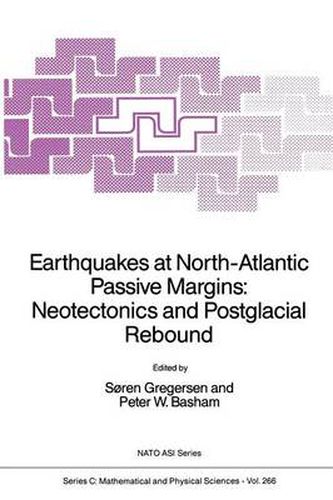Readings Newsletter
Become a Readings Member to make your shopping experience even easier.
Sign in or sign up for free!
You’re not far away from qualifying for FREE standard shipping within Australia
You’ve qualified for FREE standard shipping within Australia
The cart is loading…






This title is printed to order. This book may have been self-published. If so, we cannot guarantee the quality of the content. In the main most books will have gone through the editing process however some may not. We therefore suggest that you be aware of this before ordering this book. If in doubt check either the author or publisher’s details as we are unable to accept any returns unless they are faulty. Please contact us if you have any questions.
For many years, the two subjects of (1) postglacial rebound and its potential for generating earthquakes and (2) the seismicity of passive continental ml!rgins have been of interest and concern to earth scientists on both sides of the North Atlantic. New data and theoretical interpretations have given rise to vigorous discussions on how much the two phenomena inter-relate and whether a significant controlling factor on seismicity in northeastern North America and Scandinavia is the crustal uplift that has been occurring since the latest ice age. The lack of a good understanding of these phenomena presented a particular problem for engineering seismologists attempting to prepare accurate seismic hazard estimates for facili ties both on land (e. g. , nuclear power stations and radioactive waste repositories) and offshore (e. g. , petroleum production facili ties) . The NATO Advanced Research Workshop programme provided an opportuni ty to bring together a group of relevant geophysicists, geologists and geodesists from both sides of the North Atlantic, and a workshop on Causes and Effects of Earthquakes at Passive Margins and in Areas of Postglacial Rebound on both Sides of the North Atlantic was held in Vordingborg, Denmark, 9-13 May 1988. The sup port of the NATO Science Committee is gratefully acknowledged.
$9.00 standard shipping within Australia
FREE standard shipping within Australia for orders over $100.00
Express & International shipping calculated at checkout
This title is printed to order. This book may have been self-published. If so, we cannot guarantee the quality of the content. In the main most books will have gone through the editing process however some may not. We therefore suggest that you be aware of this before ordering this book. If in doubt check either the author or publisher’s details as we are unable to accept any returns unless they are faulty. Please contact us if you have any questions.
For many years, the two subjects of (1) postglacial rebound and its potential for generating earthquakes and (2) the seismicity of passive continental ml!rgins have been of interest and concern to earth scientists on both sides of the North Atlantic. New data and theoretical interpretations have given rise to vigorous discussions on how much the two phenomena inter-relate and whether a significant controlling factor on seismicity in northeastern North America and Scandinavia is the crustal uplift that has been occurring since the latest ice age. The lack of a good understanding of these phenomena presented a particular problem for engineering seismologists attempting to prepare accurate seismic hazard estimates for facili ties both on land (e. g. , nuclear power stations and radioactive waste repositories) and offshore (e. g. , petroleum production facili ties) . The NATO Advanced Research Workshop programme provided an opportuni ty to bring together a group of relevant geophysicists, geologists and geodesists from both sides of the North Atlantic, and a workshop on Causes and Effects of Earthquakes at Passive Margins and in Areas of Postglacial Rebound on both Sides of the North Atlantic was held in Vordingborg, Denmark, 9-13 May 1988. The sup port of the NATO Science Committee is gratefully acknowledged.